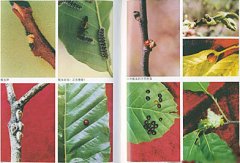Cultivation techniques of small Coffee in Yunnan Province: harvesting and processing

Harvest
Timely harvest is an important link to ensure high coffee yield and improve product quality. The harvest time of small seed coffee is more concentrated, when the fruit turns red, it can be harvested. It should be picked along with ripening. After completely turning red, the fruit is easy to fall off. (9)
Processing
Wet processing is generally used.
(1) washing fruit. Wash away the soil or sundries that stick to the fruit.
(2) grading of fresh fruit. Separate the green fruit, dried fruit, overripe fruit, branches and leaves and other sundries, and then use a graded sieve or water washing pool to separate the ripe red fruit according to size and weight.
(3) peeling. Peeling with a peeling machine or worker. The use of human-driven peeling machine can handle 35 kilograms of fresh fruit per hour; small electric peeling machine can handle 250 kilograms of fresh fruit per hour; large electric peeling machine can handle 3 tons of fresh fruit per hour.
(4) split skin. All the well-equipped peeling machines have peeling equipment, that is, the power is used to separate the bean grain from the peel. If you split the skin manually, each worker can only be divided into 26 kilograms, and the work efficiency is very low.
(5) degumming. Soak the peeled beans in a fermentation tank or water tank and ferment for 24 to 36 hours. Change the water every 12 hours.
(6) cleaning. The beans should be washed immediately after degumming, usually in a large fruit washing pool.
(7) drying. After washing, the beans can be dried or dried. If you want to dry, you need to bask in the concrete or on the bamboo fence for 5-7 days.
(8) the shelled and dried coffee beans can be shelled after the sampling inspection is qualified.
(9) after shelling, the impurities and unqualified residual beans are picked out manually, and then packed by grades to form commercial beans.
Important Notice :
前街咖啡 FrontStreet Coffee has moved to new addredd:
FrontStreet Coffee Address: 315,Donghua East Road,GuangZhou
Tel:020 38364473
- Prev

Common Diseases and pests in Coffee cultivation and Prevention and Coffee basic knowledge
(1) Pest control 1. Coffee tiger longicorn beetles are distributed in all coffee producing areas in the world, and also occur in Yunnan, Guangxi and Hainan Island in China. It is one of the major pests of coffee. The coffee tiger longicorn beetle harms the coffee trunk for more than 2 years. At first, it eats between the cambium and xylem, and then eats the xylem. The victim was a curved tunnel filled with sawdust.
- Next

Cultivation techniques of small-grain Coffee in Yunnan Province: disease Control
1. Coffee rust is the main disease of coffee, the most harmful, the damaged plants, light reduced yield, serious death. Coffee rust is mainly harmful to leaves and sometimes to young fruits and twigs. After the leaves were infected, many light yellow spots appeared at first and enlarged in the form of water stains, followed by orange-yellow powdery spores on the back of the leaves, and there was a light green halo around the disease spots, which gradually expanded or connected in the later stage.
Related
- Beginners will see the "Coffee pull flower" guide!
- What is the difference between ice blog purified milk and ordinary milk coffee?
- Why is the Philippines the largest producer of crops in Liberia?
- For coffee extraction, should the fine powder be retained?
- How does extracted espresso fill pressed powder? How much strength does it take to press the powder?
- How to make jasmine cold extract coffee? Is the jasmine + latte good?
- Will this little toy really make the coffee taste better? How does Lily Drip affect coffee extraction?
- Will the action of slapping the filter cup also affect coffee extraction?
- What's the difference between powder-to-water ratio and powder-to-liquid ratio?
- What is the Ethiopian local species? What does it have to do with Heirloom native species?

